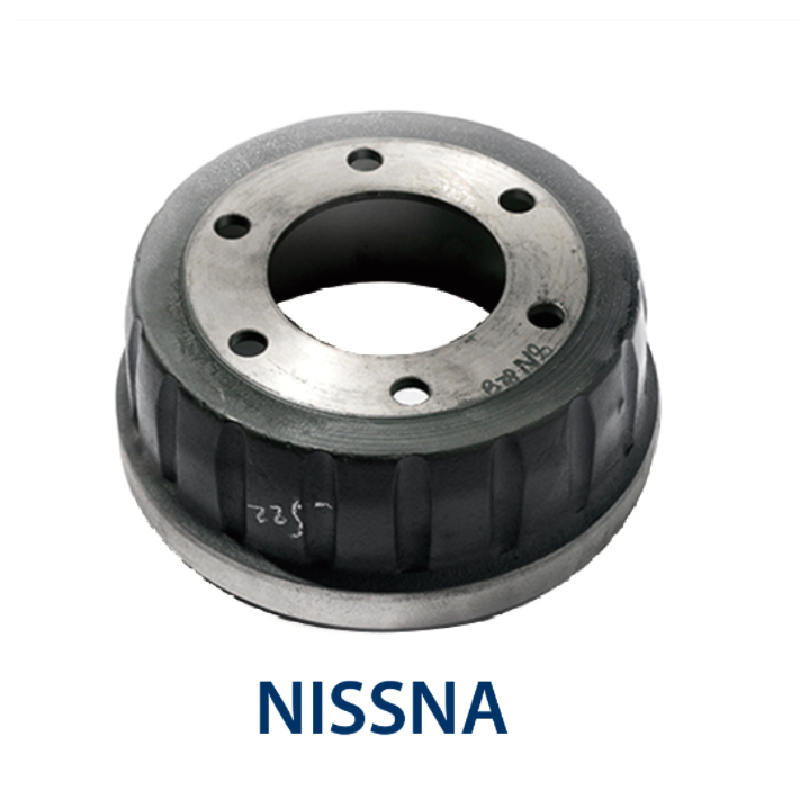Nov . 10, 2024 10:56 Back to list
Understanding the Importance of Semi Truck Brake Drum Thickness for Safety and Performance
Understanding the Importance of Semi Truck Brake Drum Thickness
In the realm of commercial trucking, safety is paramount. One critical component that plays a significant role in ensuring the safety of a semi truck is its braking system. Among the various parts of the braking system, the brake drum is particularly crucial. The thickness of the brake drum can greatly impact both vehicle performance and safety. This article aims to delve into the significance of brake drum thickness, factors influencing it, and the implications of improper thickness.
What is a Brake Drum?
A brake drum is a cylindrical component that works in conjunction with the brake shoes to create friction and stop the vehicle. It is typically made from cast iron or a similar sturdy material to withstand the immense heat generated during braking. In simple terms, when the brake is applied, the shoes expand against the drum, creating friction that slows down the truck.
Why Thickness Matters
The thickness of a brake drum is crucial for several reasons
1. Heat Dissipation When a semi truck brakes, the energy generated converts to heat. A thicker brake drum has greater mass, allowing it to absorb and dissipate heat more effectively than a thinner drum. This prevents overheating, which can lead to brake fade and decreased stopping power. Over time, a well-maintained thickness helps in avoiding costly repairs and enhancing safety.
2. Durability Brake drums undergo wear over time, particularly in heavy-duty applications like trucking. Thicker drums are less susceptible to warping and cracking under high stress, thereby extending their lifespan. Conversely, if a drum is worn down beyond its minimum allowable thickness, it can fail, leading to catastrophic braking failure.
3. Performance The performance of a truck's braking system hinges on the correct thickness of the brake drum. If the drum is too thin, it can lead to uneven wear on the brake shoes and result in less effective braking. Suboptimal performance not only compromises safety but also leads to increased maintenance costs as components wear out faster.
semi truck brake drum thickness

Factors Influencing Brake Drum Thickness
Several factors influence the thickness of semi truck brake drums
- Manufacturer Specifications Each manufacturer has specific guidelines regarding the acceptable thickness of brake drums. It is essential for truck owners and operators to be familiar with these specifications to ensure optimal performance and safety.
- Driving Conditions Trucks that operate in hilly terrains or frequently encounter heavy loads experience more wear on their brake components. Consequently, these vehicles may require thicker drums or more frequent inspections to maintain safety.
- Maintenance Practices Regular maintenance, including checking the thickness of the brake drums, is vital. Adhering to maintenance schedules can prevent excessive wear and ensure that the drums remain within recommended thickness limits.
Monitoring Brake Drum Thickness
Truck operators should regularly inspect the brake drum thickness as part of their vehicle maintenance routine. Utilizing a micrometer or caliper can provide precise measurements. When the thickness nears the manufacturer’s minimum limit, it is prudent to replace the drums to maintain safety and functionality.
Conclusion
In conclusion, the thickness of semi truck brake drums is a vital aspect of their overall braking performance and safety. Properly maintained brake drums—ideally within manufacturer specifications—ensure effective heat dissipation, durability, and reliable performance. Truck owners and operators must prioritize regular inspections and maintenance to avoid excessive wear and potential failure. Ultimately, investing in the safety and efficiency of a truck translates into better performance on the road and greater peace of mind for all drivers. Remember, a well-maintained braking system not only prolongs the life of the trucking components but also safeguards the lives of everyone on the road.
-
HINO Industrial Solutions - ¡Ң���ຽ��е��������˾ | Advanced Efficiency&Customization
NewsJul.13,2025
-
HINO Industrial Efficiency Solutions - ¡Ң���ຽ��е��������˾
NewsJul.13,2025
-
HINO Industrial Solutions - ¡Ң���ຽ��е��������˾ | Advanced Technology&Reliability
NewsJul.13,2025
-
HINO Industrial Efficiency-Jiangsu Hino Industrial|Productivity Optimization&Cost Reduction
NewsJul.12,2025
-
HINO-¡Ң���ຽ��е��������˾|Advanced Industrial Solutions&Energy Efficiency
NewsJul.12,2025
-
Premium Brake Drum Iveco – Durable Drum Brake Drum & Brake Shoe Solutions
NewsJul.08,2025
